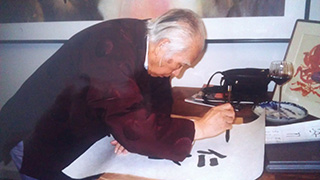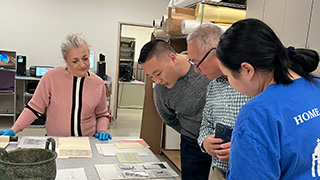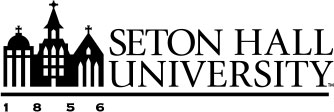The Language of Legacy: Mandarin Professor and Collector Wang Fangyu Left Lasting Brushstrokes
Monday, November 27, 2023

Wang Fang-yu creating an ink painting.
Wangfang Yu, a groundbreaking professor with an innovative, interdisciplinary approach to Chinese language, calligraphy, and connoisseurship amassed a collection whose impact continues to echo through the generations. It is still available to students and scholars today at the Walsh Gallery.
Professor Fred Fangyu Wang (as he was known) was born in 1913 and was the second-eldest son of a "wealthy and socially prominent family in Beijing." The Wang family were "enthusiastic collectors of calligraphy, painting, and porcelain," and Professor Wang set out on an artist’s path. He took calligraphy lessons starting at age three, though Professor Wang’s family intended him to serve in the Chinese government in a scholarly capacity. A turbulent political situation created other plans and Professor Wang graduated from Catholic (Furen) University in 1936. Fluent in English, he emigrated to the United States, where he earned a master’s degree from Columbia University and later found a position teaching Mandarin Chinese at Yale University.
"At Yale...he created a type of algorithmic learning for Chinese language," said Gallery Director Jeanne Brasile. "It was like computer learning, and Yale did not like that at all." Professor Wang’s ingenuity as an educator was maligned, instead of celebrated. "They thought it was way too radical," she added. By contrast, Seton Hall saw the idea of using algorithms to teach a language as groundbreaking. "People didn't even know what computers were then, so we welcomed him at Seton Hall, and he became an integral part of the Chinese language program," said Brasile. Yale’s loss was Seton Hall’s gain.
Wang taught Mandarin at Seton Hall for 33 years, and alongside his wife Sum Wai Wang, become a discriminating collector of Chinese art - in particular the artist Bada Shanren (1626-1705). Over the span of his career, Mr. Wang authored multiple articles and two books on Bada. His son notes that these are still known as the primary sources of reference on Bada. "Within the walls of the Beijing Palace Museum, my father was known as "'Bada Wang'," said Mr. Wang. The elder Wang felt kindred to Shanren, who, like the Wangs, experienced political uprising in his homeland that uprooted families and untethered them.
Professor Wang retired from Seton Hall in 1978 after writing his son’s final college tuition check. He created award-winning calligraphy and grew his prestigious art collection, notably acquiring over time the largest number of works by the artist Bada even on a university professor’s salary. This was quite a feat. "To be a major collector, you are constrained by the size of your wallet," notes Mr. Wang. "That my parents were able to do that as scholars is based on their scholastic acumen."
At the time of Professor Wang’s death in 1997, Mr. Wang said, his father and mother possessed the largest private collection of Shanren works in the world, which the elder Wang gifted much of to the Freer Gallery of Art - now known as the National Museum of Asian Art - and to Seton Hall.
His legacy lives on not only through his collections, but also the love of art he nurtured in his son. "In addition to the artwork around our home, many luminaries in the field would visit and we would visit their homes in kind," recalled Mr. Wang. "Further, my parents were consistent in taking me to both galleries and auction houses to view works for sale. This avocation was very much a family activity."

Gallery Director Jeanne Brasile with Theresa, Timothy, and Charlie Wang.
Theresa Wang, a 2023 graduate of the Buccino Leadership Institute and the College of Nursing (2023) and Professor Wang’s great-granddaughter, discovered that his collection was a way to connect to her past. Last March, she, her brother Timothy, and her father Charlie visited the Gallery to see a curated selection of the wealth of art, artifacts, and materials amassed by Professor Wang. They were also able to view handwritten letters, exhibition catalogs from galleries featuring his work and family photographs, but previously had been unaware of the breadth of Wang Fangyu’s collection. "I've had a very special connection with Seton Hall since my freshman year," she said. "Something drew me to [the university]. It was a full circle moment when I realized how big of an impact my great-grandfather had, which made it even more special to me."
The collection at Walsh Gallery includes hundreds of paintings, ceramics, bronzes and textiles from China, Japan, Korea, India, and more. "Encounters with artifacts can have profound impacts on learning even across time and even generations," said Brasile. Mr. Wang would agree. "My father will be best remembered for researching and collecting Bada," he said. Today, he added, it is unheard of that an individual would be both universally recognized as a preeminent scholar of a major artist and accumulate the most prominent collection of that artist’s work. Professor Wang, however, achieved both.
If you would like to know more about how you can access the art, artifacts, and archival collections to enhance your classes, learning or research, contact the Gallery at 973-275-2033 or [email protected] to make a research appointment.
Categories: Arts and Culture, Education

